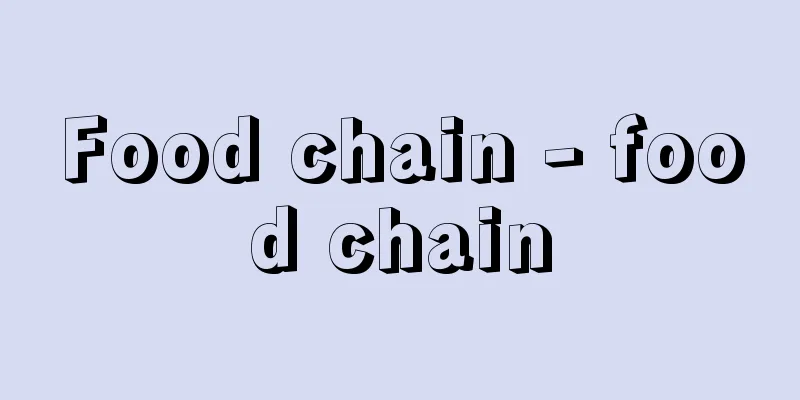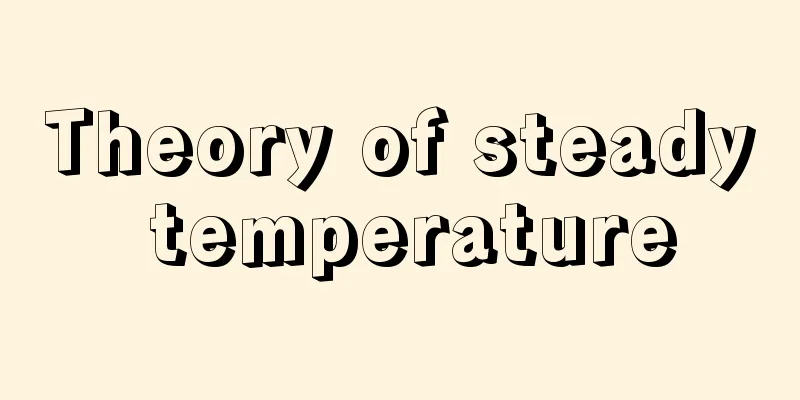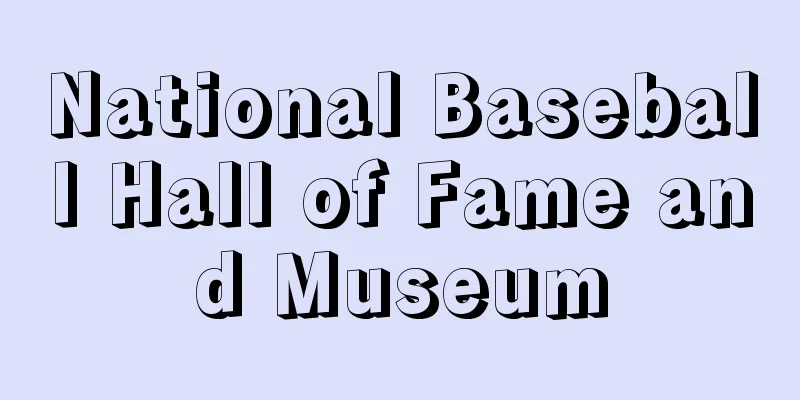Food chain - food chain

|
All organisms in a biological community are connected to each other in a relationship of eating and being eaten, and this series of relationships is called a food chain. One example is the chain of polar bears → arctic foxes → ptarmigan → reindeer moss in the Arctic tundra. The first food chain diagram was drawn by American ecologist Shelford in 1913, but it became widely studied after British ecologist Elton established this analysis as the basis for animal community research in 1927. When examining the food chain of a certain biological community, we find that there are many species that eat and many species that are eaten at each stage, and that they are interrelated, forming a complex and intricate diagram of relationships that is often called a food web, and it is even impossible to examine the chain completely. Nevertheless, some general characteristics can be found in the chain. First, a chain usually has four or five stages, and it is extremely rare for it to have more than seven stages. Second, there are two basic types of chains: the grazing food chain, which starts with "living plants" and continues to animals as in the previous example, and the detritus food chain, which starts with biological remains such as dead plants → springtails → spiders → etc., but in the latter case, we can also trace it back to green plants. Since green plants absorb solar energy into organic compounds, we can say that "animals also live by eating solar energy." Third, although different communities have different combinations of organisms, similar relationships exist between different species. For example, the arctic fox, which lives in the tundra, prefers to eat the eggs of common guillemots and survives in winter on the leftovers of polar bears, while in the tropical African savannah, the spotted hyena devours ostrich eggs and eats the remains of zebras killed by lions. What a certain organism does in a community, that is, its position in the biological environment, its relationships to food and enemies, is called an "ecological niche." All organisms cannot survive and thrive without occupying a certain ecological niche in the community, and much of the regulation in the community is based on the relationships between species over this niche. A key point in understanding linkages is that the same species may have different foods and necessarily occupy different ecological niches when they live in different areas, during different developmental periods, or in different seasons. Ayu fish that hatch in the downstream of a river in late autumn flow down to the sea and spend their juvenile stage in the sea until the following spring, during which time they feed on water fleas and are in a niche where they can be eaten by piscivorous fish. When they swim upstream into the river, where they live as immature or adult fish, they change niche to feed on attached algae and are preyed upon by piscivorous fish and piscivorous birds. Naturally, research is also being conducted to quantitatively analyze food chains. One method is to sort out the complex and intricate chains by trophic level, reduce them to energy flows and material cycles, and investigate their dynamics. There are several terms similar to food chain, such as food ring, food web, and food complex, but a food ring refers to the entire food chain within a community, and the latter two are used with roughly the same meaning. [Maki Iwao] [Reference] |The " Entosquama " is a group of arthropod crustaceans that are small and have a relatively simple body structure . Example of a food chain (Bear Island, Arctic) Source: Shogakukan Encyclopedia Nipponica About Encyclopedia Nipponica Information | Legend |
|
生物群集内のすべての生物は互いに食う・食われるの関係でつながっており、この一連の関係を食物連鎖という。北極圏のツンドラでは、シロクマ→キョクチギツネ→ライチョウ→トナカイゴケというつながりが成立し、これが一つの例である。初めて食物連鎖図を描いたのは、アメリカの生態学者シェルフォードで1913年のことであるが、1927年にイギリスの生態学者エルトンがこの分析を動物群集研究の基礎に置いてから、広く調べられるようになった。 ある生物群集の食物連鎖を調べてみると、いくつもの食べる種といくつもの食べられる種とがそれぞれの段階に存在し、相互に関係しあい、しばしば食物網とよばれるように、複雑に入り組んだ関係図ができあがり、連鎖を調べ尽くすことは不可能でさえある。それにもかかわらず、連鎖にはいくつかの一般的特徴がみいだされる。第一には、ひと連なりの連鎖には普通四つか五つの段階があり、七つ以上の段階があるのはきわめてまれなことである。第二に、連鎖には、前例のように「生きた植物」から始まって動物へと連なる生食連鎖grazing food chainと、枯死植物→トビムシ類→クモ類→……のように生物遺体から始まる腐食連鎖detritus food chainの二つの基本型があるが、後者の場合も元をたどれば緑色植物に行き着くのである。緑色植物は太陽エネルギーを有機化合物の中に取り込むわけであるから「動物も太陽エネルギーを食べて生きている」ことがいえる。第三に、群集が違えば違った組合せの生物がいるが、種が違っても互いに似た関係が存在しているのである。ツンドラにすむキョクチギツネはウミガラスの卵を好んで食べ、冬にはシロクマの食べ残しで飢えをしのぎ、一方、熱帯アフリカのサバンナでは、マダラハイエナがダチョウの卵を食い荒らし、ライオンが殺したシマウマの残り物を食べているのが、その一つの例である。 群集のなかで、ある種の生物が何をしているかということ、すなわち、その生物の生物的環境における位置、その食物ならびに敵に対する諸関係を「生態的地位」ecological nicheという。すべての生物は群集内で、ある生態的地位を獲得しなければ生存と繁栄を図ることができないわけで、群集内の調節の多くはこの地位を巡る種間の関係に基づいているのである。連鎖を理解するうえでの要点として、さらに、同じ種でも、違った区域に生息したり、発育期が違ったり、季節が違ったりすると、食物は異なって、必然的に違った生態的地位を占めることがある。晩秋に川の下流域で孵化(ふか)したアユはそのまま海に流れ下り、翌春までの稚魚期を海で過ごすが、この時期にはケンミジンコを摂食し、魚食魚に食べられる地位にある。それが川へ遡上(そじょう)し、そこを生息場所とする未成魚期や成魚期には、付着藻類を食べ、魚食魚や魚食性鳥類に捕食される地位に変わるのである。 食物連鎖を量的な側面から分析する研究も当然行われている。複雑に入り組んだ連鎖を栄養段階で整理し、エネルギーの流れと物質循環に還元して、これらの動態を探るのもその一つの方法である。 なお、食物連鎖に類似した用語は、食物環、食物網、食物錯雑などいくつかあるが、食物環は群集内の食物連鎖の全体を表し、後二者もほぼ同じ意味に使われる。 [牧 岩男] [参照項目] |「切甲類」は、節足動物甲殻類のうち、小形で体制が比較的簡単なものをまとめた一群©Shogakukan"> 食物連鎖の例(北極圏ベア島) 出典 小学館 日本大百科全書(ニッポニカ)日本大百科全書(ニッポニカ)について 情報 | 凡例 |
Recommend
Teijo Zakki - Teijo Zakki
A commentary on the customs of the court. Written...
"Ode on a Greek Vase" - Greek Ode on a Vase
… Thus, 1919 became Keats's "year of won...
Reparation Problem
In modern Western history, when a dispute between ...
Pseudomonas
Also called Pseudomonas or Pseudomonas. A genus of...
green
…Words such as green grass, green leaves, green v...
cauliflower
Nutrition and Function It is a cruciferous vegeta...
Friedrich Wilhelm IV
1795‐1861 King of Prussia. Reigned 1840-61. Son of...
Aquino, B.
... However, the innovative policies that were im...
Wagnaar, J.
… In the 17th and 18th centuries, citizen perform...
Beautiful rust
...One of the schools of tea ceremony founded by ...
Kanda Festival
This is the annual festival of Kanda Shrine, locat...
Mr. Takahashi
An ancient powerful clan descended from the Kashiw...
Viperfish - Viperfish
A deep-sea fish of the family Viperidae in the ord...
l-ephedrine
… [Medicinal] In addition to Chinese Ephedra, the...
Iko Myoan - Iko Myoan
Year of death: December 3, 10 (January 2, 1568) Ye...









